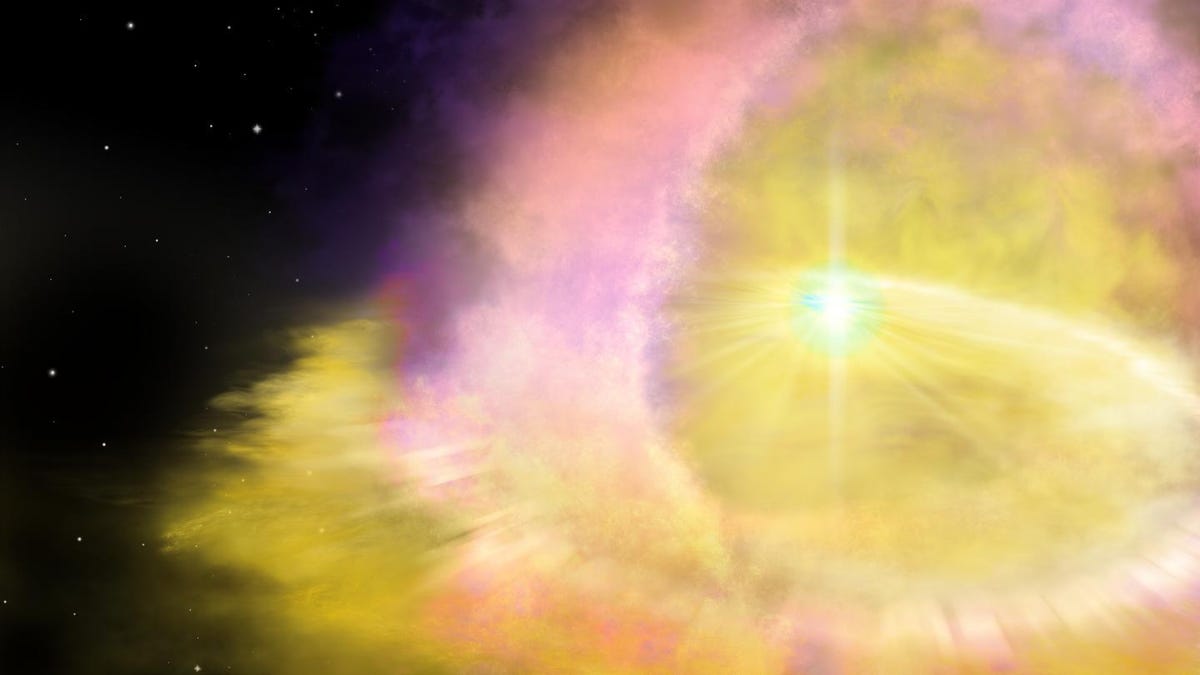Brightest supernova ever seen shines twice as much as any other
Scientists spot two merging stars light up a corner of the universe like nothing humans have witnessed before.

An artist's impression of a super supernova
Many stars end their lives in one last supernova blaze of glory, but until now we didn't know just how bright and powerful the cosmic death spasms can be. Scientists have spotted a supernova more than twice as bright as any other stellar explosion.
A team from Harvard University, Northwestern University, Ohio University and the UK's University of Birmingham believe that the supernova labeled SN2016aps could be two massive stars that merged before exploding.
"In a typical supernova, the radiation (or observable light) is less than one percent of the total energy. But in SN2016aps, we found the radiation was five times the explosion energy of a normal-sized supernova," University of Birmingham astronomer Matt Nicholl said in a release. "This is the most light we have ever seen emitted by a supernova."
Nicholl is lead author of a paper on the find published Monday in Nature Astronomy.
The scientists watched the explosion for two years and were able to determine that its mass was as much as 100 times that of our sun's mass, and five to 10 times more massive than a typical supernova.
Before this discovery, the notion that two stars could merge and power a super supernova -- what astronomers call a "pulsational pair-instability" -- was theoretical.
Harvard Professor Edo Berger, who co-authored the paper, said the discovery comes at a great time, as upcoming next-generation telescopes could be used to target similar events and create a time machine of sorts in the process.
"Now that we know such energetic explosions occur in nature, NASA's new James Webb Space Telescope will be able to see similar events so far away that we can look back in time to the deaths of the very first stars in the universe," Berger said.

